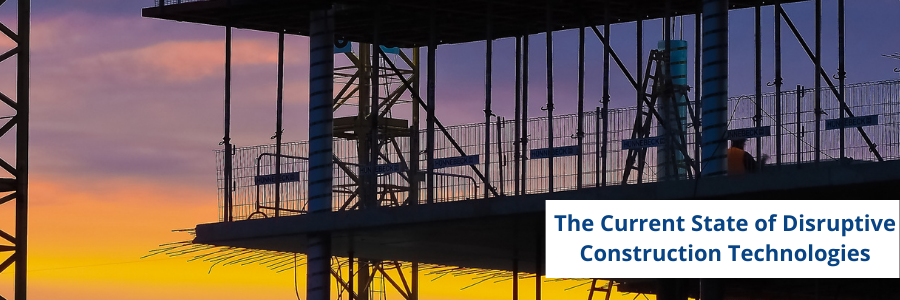Multifamily housing has been an appealing asset class for decades, however, the sector has threatened to be a victim of its own success. In a crowded market for multifamily, we see a bright light in workforce housing. Our CEO, Terrell Gates, dives deeper in our latest article.

By: Terrell Gates
Multifamily housing has been an appealing asset class for decades, and especially since the Global Financial Crisis threw a wave of former homeowners into the rental market in 2008-09. In recent years, however, the sector has threatened to be a victim of its own success. New development has been robust (though demand has usually exceeded it so far), and as with most types of yield-oriented assets, investors have been paying sky-high valuations as cap rates have gone well below historical averages and even pre-GFC bubble figures. This leaves many wondering how much future potential the sector has within this business cycle. (Or, in real estate cliché terminology: what inning is this for multi-family?)
But not all slices of the multifamily segment are subject to the same market forces, and we see one particular niche – workforce housing – that is likely to benefit over the long term from a confluence of favorable fundamentals.
Workforce housing can have a broader connotation, but it usually refers to a lesser-known portion of the multi-family segment that occupies a position just above “affordable housing.” It’s intended for households making an annual income that is around the national median for renters, which is about $33,000. While “affordable housing” typically involves some sort of government subsidy, either for the developer or the tenant, workforce housing does not. When done properly, workforce housing can provide quality yet affordable housing to the masses.
Historically, Workforce Rents and Occupancy Have Outperformed “Class A”
Outward appearances may favor Class A multifamily, but workforce housing historically has actually performed as well as or better than its upscale counterpart. In fact, we have found that despite having a lower-income tenant, workforce housing achieves the same or better long-term rent growth and greater occupancy resiliency.
And in the current market, this stability and performance is available at relatively more attractive cap rates. While Class A multi-family is selling at cap rates of 4.5-5.0%, cap rates for workforce housing properties average at least 100 points higher, despite having a more resilient income stream.
Looking ahead, three fundamental factors make this market segment attractive
1. Demand Should Remain Steady
Higher-income Class A tenants are apt at some point to consider a home purchase, plus many Class A renters are aspirational renters, spending way more than 30% of their income on rent. Real wage growth for the working class is likely to remain tepid. So, barring a lowering of interest rates or a loosening of lending standards, demand for single-family housing from this middle segment of the market will be limited, and the supply of tenants for workforce housing should remain steady. Given that historically low interest rates have not expanded the homeownership rate despite years of economic recovery, plus strong demographic trends driving rental demand, we believe the forward outlook is defensible in the long-term.
2. Supply Is Constrained
Because of the economics of rental property, construction of new workforce housing will in many cases not be economically viable. Assuming that housing costs account for about 30% of household income, which is standard in most markets, households making $35,000 per year can afford to pay rent of $875 per month. Even those making the national median income of $51,000 per year, can afford only $1,275 per month.
In today’s market, however, builders are not able to construct a multifamily product at monthly rents lower than $1,500, due to labor and material costs, let alone increased land and entitlement costs. This means that the supply of workforce housing is severely constrained, offering protection against supply risk.
In the Class A market, on the other hand, adding new supply is much more economically feasible. And when that supply hits the market, rents and occupancy in the Class A segment are likely to be volatile.
3. Technological Innovation Is Unlikely
Construction costs generally run high due to the industry’s labor-intensive nature and to prices of construction inputs, many of which are determined by global markets. This would seem to make the industry ripe for technological disruption, but so far such innovation has been more gradual than disruptive.
Modular construction has worked for simple projects and in certain segments, such as mobile homes. But large, complex projects that face numerous obstacles to completion have not yet undergone the wholesale transformation for which there is potential.
And it’s not difficult to understand why, as every project is unique. In other industries, the production process is standardized, making it receptive to the efficiencies that come with technological advancement. In real estate, on the other hand, each project is a custom build with its own challenging idiosyncrasies, whether it’s land assemblage, building codes, zoning restrictions, site specific nuances or a host of other hurdles. The Pacific Park project in Brooklyn (formerly Atlantic Yards), where modular multifamily builders faced a range of difficulties making the project come in well over budget, is just one example.
So, it’s unlikely that a disruptive technology will emerge that would streamline costs enough to remove the current supply constraint.
In summary, multi-family development costs have materially outpaced real wage growth in the U.S. over the last three decades, driving renters to spend a greater percentage of their wages on rent and related expenses. This is the current reality, until either construction costs reverse (due to truly disruptive methods) or a significant shift in economic policy fosters genuine wage growth for middle income households.
It’s no secret that the multifamily sector has historically been more resilient than other traditional real estate segments, such as office, retail, industrial and hotels, in part because of the resilient income stream that comes from steady tenant demand. It’s a cliché, but everyone needs a place to live. Within the multifamily sector, Class A is a small slice of the whole investible spectrum. We believe it’s not as attractive as other options, yet the vast majority of investors, especially institutions, are focused here, making it a “crowded trade.” Because of positive fundamentals, however, workforce housing is likely to benefit over the long run and offer an attractive risk-adjusted return to sage investors.
Disclaimer
This commentary is neither an offer to sell nor a solicitation of an offer to buy any security. Instead, it is intended to provide general real estate commentary by Virtus Real Estate, LLC (“VRE”). This commentary is not intended to be relied upon as the basis for an investment decision, and is not complete. While many of the thoughts expressed herein are stated in a factual manner, the discussion reflects only VRE’s beliefs about certain real estate markets VRE monitors, and VRE’s views are subject to change. VRE reserves all copyright and intellectual property rights to the content, information and data within this commentary. The contents above are protected by copyright and no part or parts hereof may be modified, reproduced, stored in a retrieval system, transmitted (in any form or by any means), copied, distributed, published, displayed, broadcasted, used for creating derivative works or used in any other way for commercial or public purposes without the prior written consent of VRE. This commentary should not be construed as investment or other advice—it is presented for information purposes only and is not intended to be either a specific offer by any person to provide any financial service or product. Certain information in this commentary constitutes forward-looking statements, opinions and beliefs. Due to various risks and uncertainties, actual events or results may differ materially from such forward-looking statements, opinions or beliefs. Accordingly, such statements should be evaluated with the understanding of their inherent uncertainty. Certain information in this commentary has been obtained from third party sources and, although believed to be reliable, has not been independently verified and its accuracy or completeness cannot be guaranteed. No representation is made with respect to the accuracy, completeness or timeliness of this commentary, and any recipient agrees that VRE or its affiliates, partners, members, employees, officers, directors, agents or representatives will have any liability for any misstatement or omission of fact or any opinion expressed herein. While projections about potential real estate investments herein are based on VRE’s experience and good faith judgments, the recipient should understand that projections are based on numerous assumptions, including that existing performance trends will continue, that historical behavior of the cited property types will not change fundamentally, that perception of market opportunities for acquisition and disposition will hold true, and that the competitive landscape within which the asset operates will not change fundamentally. Any number of factors could contribute to results that are materially different.













